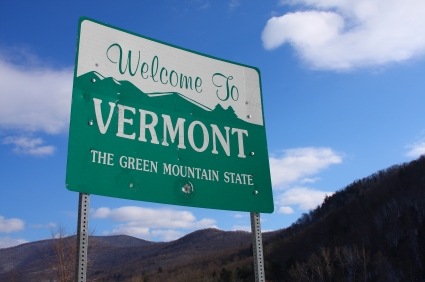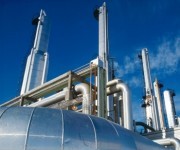Two interesting observations:
- 50% of U.S. power generation (in MWh) comes from coal, while only 20% comes from natural gas.
- 32% of total U.S. power generation capacity (in MW) is coal-fired, while 42% is gas-fired.
When it runs, the natural gas fleet emits just 50% of the CO2 of the coal fleet, which raises a rather interesting question: what would we have to do to make it run harder? And how big a difference would that make in our national CO2 footprint?
MW vs. MWh
So why, if we have more natural gas generation capacity, do we get more of our power from coal?
Simple: we have a lot of gas-fired generation (449 GW, as of 2007), it doesn’t run very often. The coal fleet is comparatively smaller (336 GW), but runs a lot more frequently. It is as if our vehicle fleet were dominated by Priuses, but they stayed parked while we drove our Escalades to work.
We have a huge resource that is already built that could massively lower CO2 emissions. Taking a page from the NRA, what if the problem isn’t that we need to build more low-carbon generation, but that we just need to make better use of what we have?
Environmental potential
To understand the opportunity, let’s look at a bit of simple math.
In 2006, the gas fleet generated 816,441,000 MWh, or 20% of what it could have produced if it had run 24/7/365.
The coal fleet, by contrast, generated 1,990,551,000 MWh, or 68% of what it could have generated if it had run 24/7/365.
If we never built another gas-fired power plant, but simply increased the annual capacity factor of the gas fleet up to the coal fleet’s 68% capacity factor, it would generate an additional 1,845,485,000 MWh, effectively displacing 93% of our coal fleet without the construction of a single new power plant.
Looking at the comparative CO2-signatures of those two fleets, that would reduce total power sector CO2 emissions by 37%. Since the power sector is responsible for 42% of U.S. CO2 emissions, that implies a 16% reduction in total U.S. CO2 emissions, just from changing generator dispatch order.
That’s a massive opportunity. What would it take to get there?
Economic considerations
There is an obvious limitation to the Prius/Escalade analogy: it’s cheaper to drive a Prius per mile, but it’s more expensive to generate a MWh of power from a gas plant than a coal plant. That, after all, is why the gas fleet doesn’t run as often.
But historic dispatch choices were made in a world in which the costs of CO2 pollution were not monetized. So the real question becomes: how big a CO2 price would be required to change dispatch order?
Intriguingly, while the environmental potential is huge, the economic cost to realize that potential turns out to be quite small.
The great economic disadvantage of gas-fired generation relative to coal is that gas is more expensive per unit of energy. The great economic advantage of gas-fired generation relative to coal is that it is more fuel efficient: while the U.S. coal fleet has an average generation efficiency of about 27%, the gas fleet has an average efficiency of about 38%.
The gas fleet also tends to have much lower non-fuel operating costs (less $ for fuel handling, fewer moving parts, etc.). Taking these factors into consideration — and assuming $2.50/MMBtu coal vs. $6/MMBtu natural gas — the variable costs (e.g., exclusive of capital recovery) of a coal plant are about $18/MWh lower than a gas plant (1.8 cents/kWh). Obviously, that is very sensitive to fuel price assumptions, but this range is hardly unreasonable for current markets.
But remember, the gas fleet has a much lower CO2 signature than the coal fleet. On a fleet average basis, every MWh shifted from coal to gas reduces CO2 emissions by 0.56 tons. So if we look at a $18/MWh cost differential to achieve 0.56 tons/MWh of CO2 reduction, that implies a (18/.56) = $32/ton CO2 price would be sufficient to tip the scales. That’s not insignificant — but not implausible either. And — here’s the key point — massively less than what any reasonable person might think it would take to shutter most of the coal industry.
Finally, note that this doesn’t require a carbon price of $32/ton to happen; it simply requires a net change in the relative costs of coal and gas-fired generation equal to $32/ton. You could get there by giving the gas guys nothing and hitting the coal plants with a $32 fine, but you could also get there by giving the gas guys $10 and hitting the coal guys with a $22 fine. A functioning cap-and-trade with bilateral rights will allow some sort of transaction between those two parties and — without speculating on those specific rules — one can assert with confidence that a $32 delta between coal and gas does not need anyone to buy or sell carbon credits at a $32/ton price.
Practical constraints
To be sure, we’re never going to shut down 93% of the coal fleet just by running gas harder. There are parts of the grid (like West Virginia) so devoid of gas assets that there’s no way to maintain voltage stability if you rely on far-away gas. And of course, there is the supply and demand issue (booming gas demand + slumping coal demand is almost certainly incompatible with $6 gas and $2.50 coal).
On the other hand, the gas fleet is hardly capped out at 68% capacity factor. Moreover, if we started the switch, we’d start by running the most efficient gas plants harder and the least efficient coal plants less so the first 20% is much cheaper, per ton of CO2 reduction, than the last 20%.
Of course this isn’t a panacea. You can’t get to the end game only with gas any more than you can get to the end game only with solar. It’ll take a lot of steps. But what’s fascinating about this analysis is that the gas fleet is uniquely able to quickly and — at least initially — quite cheaply make a huge dent in our CO2 emissions. It’s a tool we ought to use, and we ought to examine our proposed CO2 regulations carefully to make sure it gets put to use. Free allowances to coal plants don’t get you there …



